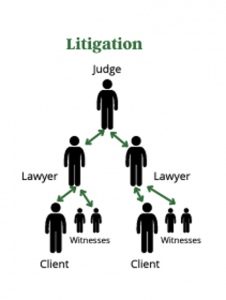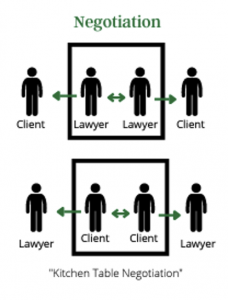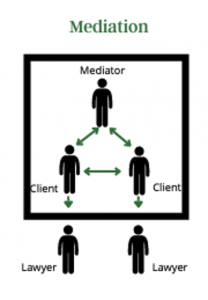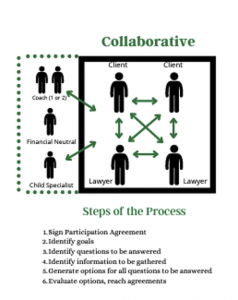Exploring Divorce Path Options
Divorce can be a challenging and emotional process, but knowing your options can help you make informed decisions that align with your unique needs. In this article, we will explore five common paths to divorce: litigation, arbitration, negotiation, mediation, and collaborative divorce. Let’s delve into each option and understand how they differ.
Divorce Litigation:
Divorce litigation is the traditional method where each spouse hires their own attorney, and the case is presented before a judge in a court of law. This path can be adversarial, costly, and lengthy. Litigation is necessary in certain cases when disputes cannot be resolved amicably. However, it’s important to be aware that it can be emotionally and financially draining due to the formal courtroom setting and the potential for lengthy legal proceedings.

Divorce Arbitration:
Divorce arbitration offers a more private alternative to litigation. In this process, a neutral third-party, such as an experienced family law attorney or retired judge, acts as the decision-maker. Similar to a court case, both spouses present their arguments and evidence, and the arbitrator’s decision is binding. Arbitration provides more flexibility in terms of scheduling and procedure compared to litigation, but it’s crucial to understand that the arbitrator’s decision is usually final and may not be subject to appeal (like litigation).

Divorce Negotiation:
Divorce negotiation involves spouses working together, either directly or through their attorneys, to reach an agreement on the terms of their divorce. This path empowers couples to maintain control over the outcome and encourages compromise. Negotiation can be done through informal discussions or formal settlement conferences. It offers the opportunity for creative problem-solving and tailoring the agreement to the specific needs and interests of both parties. Attorney assisted negotiation is how I settled my own divorce.

Divorce Mediation:
Divorce mediation involves a neutral third-party mediator who facilitates discussions between the spouses. The mediator helps identify areas of agreement, assists in communication, and guides the couple toward finding mutually acceptable solutions. Unlike litigation or arbitration, the mediator does not make decisions but informs the spouses of options available to help make their own choices. Mediation fosters open dialogue, encourages cooperation, and is often less adversarial than traditional litigation. It can provide a supportive environment for reaching a mutually beneficial agreement, when both spouses participate, cooperate, and fully disclose all financials.

Collaborative Divorce:
Collaborative divorce is a team-based approach that involves spouses, their attorneys, and sometimes other professionals, such as a financial neutral, coach, and/or child specialist. The team works together to find solutions that meet the needs of both parties and their children, if applicable. Collaborative divorce emphasizes open communication, respect, and a commitment to resolving issues outside of the courtroom.

Do-It-Yourself (Pro Se) Divorce
Do It Yourself or Pro Se Divorce is known as the kitchen table approach. The spouses decide what will be in their agreement without the help of attorneys, financial advisors, or other professionals. This approach emphasizes short-term cost reduction. However, without professional assistance, this approach creates significant opportunities to make very expensive mistakes, especially if something important is not included or incorrect in the settlement document.

Remember, every divorce is unique, and there is no one-size-fits-all approach. It’s essential to consider your specific circumstances and goals when choosing the path that suits you best. Seeking professional advice from experienced divorce specialists can provide valuable guidance throughout the process.
By: Elina Cannon, CDFA®, CFA®




